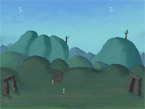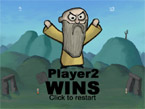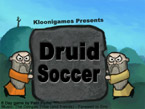There are few things I never seem to get over with. One of them is the Cacodemon’s score mechanism (previous post on the subject) and the other one is Buffy the Vampire Slayer (I started rewatching the season one again).
Actually this is more of a very dry game design theory post about how different score mechanisms affect games. Cacodemon just happens to be the practical example. So if you haven’t downloaded the game already, you can download it from here. And click here to download the examples for this post (a zip file that includes three test exes). Download them now, I’ll wait. While your downloading you can study the highly scientific chart of how the different game modes have different skill vs score rates.
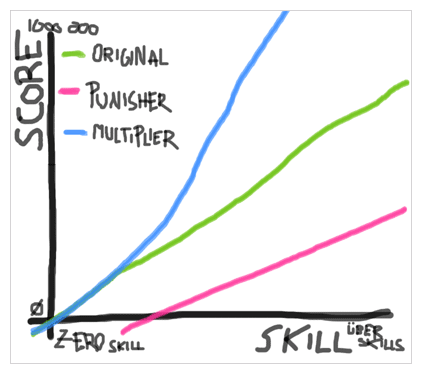
Now we can begin the boring theory part of this post. We’ll begin by examining how the score mechanisms affect the game in general. I agree with Danc of Lost Garden that score mechanism are a meta game mechanics that’s layered on top of the core game mechanism. The core game mechanism stays unaltered but a scoring mechanism can adjust the balance of the game and enhance both the fun and intensity of the core mechanism. A score mechanism can also punish players when they play poorly, but punishing players can easily make the game too difficult and frustrating for the players.
In Cacodemon terms this means that what ever the scoring mechanism is, the player still can spin and bounce the kitties (the core mechanism). Even if there wouldn’t be any kind of scoring, you could still punish the kittens from the bottom of your heart. You just wouldn’t get any kind of score from it, but you could still do it.
The Original Simple-o-Scoring System
In the original release of Cacodemon (the cacodemon.exe) there is the simplest reward mechanism possible. You score by throwing the kitties to the wall or by spinning them. You also get some points if you throw the kitten into the oven. There is no punishment if you happen to drop a kitty. You have ten cute kittens to go and the game ends when you run out of kittens. The kitten count is reduced if you drop a kitten into the pit bellow but also if you throw them into the oven. Only difference is that you get some points if you throw the kitten into the oven.
Because both the oven and the pit reduce your kittens the optimal way to play the game is to just bounce and spin the kitten for maximal points avoiding both the oven and the pit.
The funniest thing to do in the game is to whack the heck out of the small cats and this scoring mechanism encourages player to do that. But the game lacks suspense, because the scoring mechanism doesn’t really punish the player for failing. You don’t get that “Damn, I almost had it” -feeling, that you get from a more intensive gaming experience. And I feel that that’s the biggest short coming of this otherwise good and beginner friendly version of the game.
The Punisher System
During the development of the game I already tested this scoring mechanism and decided to go with the player friendlier system. In this game mode (cacodemon_test1.exe) you also get points for plucking and banging of the kitties, but you can only cash in those points by throwing the kitten into the oven. If you fail to do that (the kitten slips and plummets into the pit), you get a zero score for that kitten.
This scoring mechanism is surely going to bring some intensity into the game. The game gives the player the change to risk it all for a greater score. Keep on bouncing the kitten and it’s possible that you don’t get any kind of score or play it safe and throw the kitten into the oven the first change you get. I think it’s a nice risk to give to the player, because in the end they can only blame their own greed for their failure.
The problem with this scoring mechanism is that in practice it’s frustrating at least for the new players. A series of games with a zero score is surely going to depress even the most enthusiastic player. Even for the player who has been playing it for a while, the game can be a bit too difficult. Especially if they don’t take the risk consciously.
The Score Multiplier System
So if my original version was newbie friendly and the second one was for the hardcore players, wouldn’t it be nice if there was a way of combining the best of both systems. I think I came up with one and I also realized that I wasn’t the only one to use this system.
In this mode (cacodemon_test3.exe) there is a score multiplier that increases every time you throw a kitten into the oven. And it resets back to one when you let a kitten slip to the pit.
This way there is also the risk from the second system, but the punishment isn’t so cruel. Usually the new players don’t even bother with the score multipliers. But for the more experienced player the multiplier system gives a nice boost of replayability. And it also makes the make more intensive to play.
At least I hope it makes the game a bit more intensive without making it too difficult for the new players. I thought of adding this mechanism to the next version of Cacodemon’s Barbecue Party in Hell. So let me know what you think of it.
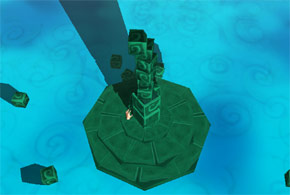
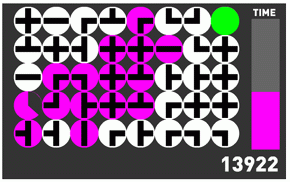
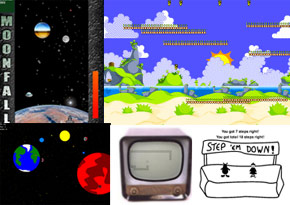

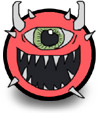
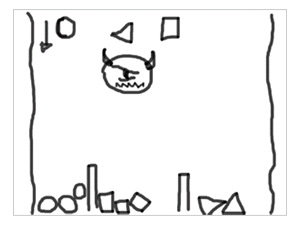
 So Cacodemon was definitely a game born out during the development of the prototype. The original idea was way crappier than the final game. And I don’t think I would have thought of the design unless I had stumbled through all these steps in the development (with an open mind to tweak the game design as I went along).
So Cacodemon was definitely a game born out during the development of the prototype. The original idea was way crappier than the final game. And I don’t think I would have thought of the design unless I had stumbled through all these steps in the development (with an open mind to tweak the game design as I went along).